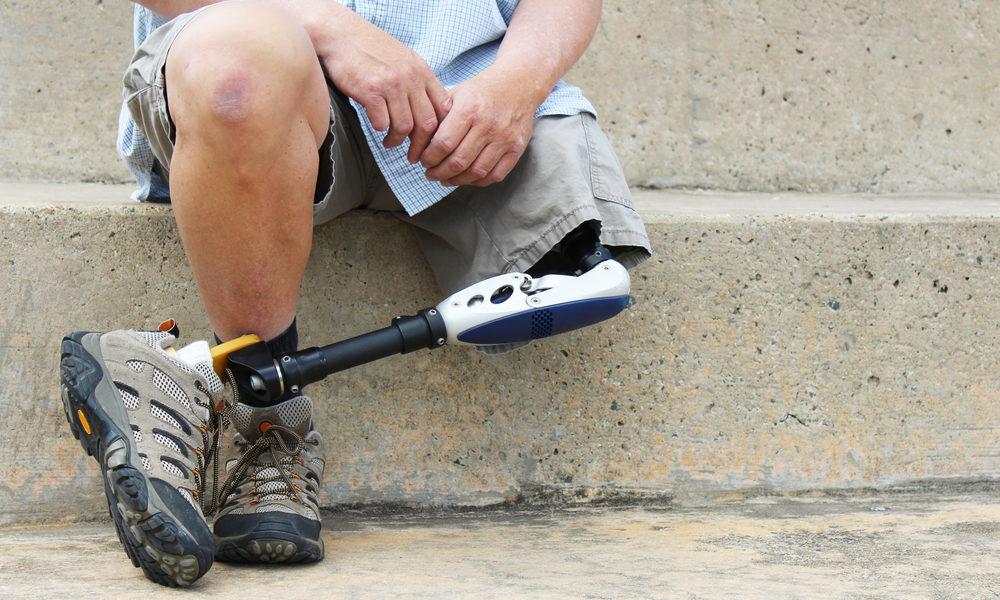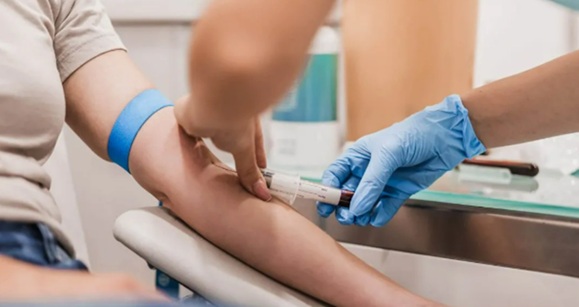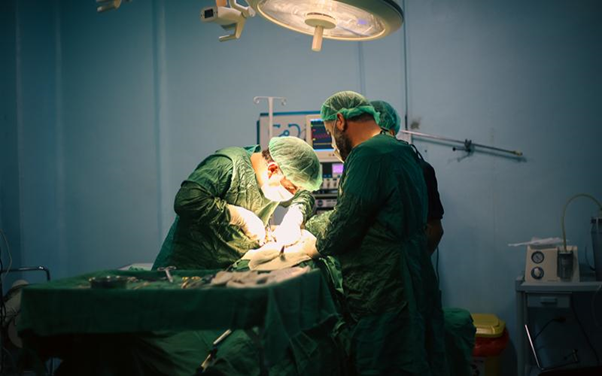
Peripheral artery disease (PAD) doesn’t just make walking harder, it changes the entire landscape of limb health and recovery. When arteries narrow and blood flow drops, minor foot problems can spiral into non-healing wounds, infections, and, for some, amputation. That’s where prosthetic care intersects with vascular medicine. Understanding how PAD drives limb loss, how poor circulation affects prosthetic fitting, and why early detection matters can dramatically improve outcomes. The good news: with smarter prevention, coordinated care, and clinics experienced in vascular amputee rehab, such as PrimeCare, patients can protect mobility and quality of life.
How does peripheral artery disease increase the risk of limb loss?
PAD reduces blood flow to the legs and feet, starving tissues of the oxygen and nutrients they need to heal. Over time, this ischemia damages skin, muscles, and nerves. Small cuts and pressure spots, especially in people with diabetes and neuropathy, can evolve into ulcers that simply don’t close.
The fast chain of slow damage
- Reduced perfusion impairs wound healing and the immune response. Even routine bacteria get the upper hand.
- Repeated pressure from tight shoes or calluses creates micro-injuries. Without adequate blood supply, these areas break down.
- Infection sets in easily and spreads faster in poorly perfused tissue.
- When pain at rest, tissue loss, or persistent ulcers occur, it signals critical limb-threatening ischemia (CLTI), the most severe form of PAD.
Without timely revascularization or meticulous wound care, CLTI carries a high risk of major amputation within months. Globally, PAD affects more than 200 million people: in the U.S., millions live with the condition, and diabetes plus smoking amplify risk considerably.
Why amputation sometimes becomes necessary
The fundamental problem is oxygen debt. If blood flow cannot be restored enough to allow healing, even though optimal dressings, antibiotics, and offloading, dead tissue must be removed to stop infection and protect a person’s life. Surgeons aim to preserve the lowest possible level of amputation that will heal reliably because each joint saved (especially the knee) reduces energy cost, improves stability, and simplifies prosthetic use.
The takeaway is blunt but useful: PAD doesn’t cause limb loss overnight. It increases vulnerability. Addressing wounds early, improving circulation when possible, and controlling risk factors can keep small problems from becoming surgical emergencies.
Impact of poor circulation on prosthetic fitting and use
After an amputation related to Peripheral Artery Disease, the residual limb often has fragile skin, altered sensation, and limited tolerance for pressure and shear. Those realities shape how prosthetic clinicians fit and progress a person’s device.
What prosthetists watch for
- Skin integrity: Thin, poorly perfused skin is prone to blistering. Liners with gentle compression and minimal shear, plus careful donning techniques, are essential.
- Volume fluctuation: PAD and post-operative edema can cause big day-to-day changes in limb size. Adjustable sockets, sock-ply management, and sometimes elevated vacuum suspension help stabilize fit. Vacuum can improve limb volume control and skin health in many users, though clinicians proceed cautiously if skin is very fragile.
- Load tolerance: Weight-bearing is introduced gradually. A staged wear-and-walk schedule prevents overload that could reopen the incision or cause deep-tissue injury.
Socket and component choices
- Soft interface + flexible inner socket: Spreads pressure and protects bony areas.
- Targeted offloading: Relief at high-risk zones (like distal tibia for transtibial amputees) reduces ulcer risk.
- Suspension: Suction or vacuum gives secure control with less pistoning: pin-lock systems may be chosen for simplicity if skin can tolerate distal traction.
- Feet and knees: For many vascular amputees, components that prioritize stability and shock absorption outrank high-spring, high-speed designs. Microprocessor knees and stance-control features can reduce falls for those with transfemoral amputations.
Energy and safety in daily life
Preserving the knee (transtibial vs. transfemoral) can lower walking energy cost substantially compared with above-knee amputation. Still, PAD-related deconditioning and cardiac risks mean therapy focuses on pace, endurance, and balance, not just raw distance. The mantra is: protect the skin, build capacity slowly, and keep circulation-friendly habits front and center.
Prevention strategies that reduce complications from PAD
Preventing complications from peripheral artery disease starts before any incision, and continues for life. The goal is simple: improve blood flow, protect the skin, and stop small problems early.
High-impact habits and therapies
- Stop smoking, fully: The single most powerful modifiable step. It improves circulation, reduces infection risk, and helps wounds heal.
- Move with purpose: Supervised exercise therapy (often treadmill-based, 30–45 minutes, three times weekly) improves claudication distance and overall conditioning. When supervised programs aren’t available, structured home walking with intervals still helps.
- Optimize medical therapy: Statins for vascular protection: antiplatelet therapy as prescribed: and for select patients after revascularization, clinicians may consider dual-pathway inhibition (low-dose anticoagulant plus aspirin) to reduce limb events. Medication choices belong to the prescriber, but adherence changes outcomes.
- Dial in diabetes, blood pressure, and lipids: Tighter glucose control lowers infection and wound risk. Blood-pressure and cholesterol control reduce progression of atherosclerosis.
Foot and residual limb protection
- Daily skin checks: Use a mirror for soles and between toes: catch redness, warmth, cracks, or drainage early.
- Right footwear and inserts: Depth shoes, custom inserts, and offloading for pressure spots prevent breakdown. After amputation, prosthetic socks, gel liners, and shear-reducing textiles protect the residual limb.
- Moisturize, not between toes: Keep skin supple: avoid maceration.
- Treat calluses and nails professionally: No bathroom surgery.
- Rapid response to changes: New pain at rest, color changes, or a hot spot inside the socket deserves same-week attention.
Clinics experienced with PAD, such as PrimeCare, teach residual-limb care, sock-ply adjustments, and safe progression of activity. Prevention isn’t glamorous, but it’s the difference between steady progress and frustrating setbacks.
Role of early detection in improving patient outcomes
Early detection of peripheral artery disease changes the trajectory from crisis management to preservation. Screening focuses on people with diabetes, smokers, those over 65, and anyone with exertional calf pain, non-healing wounds, or rest pain.
Tools that find trouble early
- Ankle-brachial index (ABI): A quick, noninvasive ratio. ABI < 0.90 suggests PAD. In diabetes or calcified vessels, toe-brachial index (TBI) can be more accurate.
- Duplex ultrasound: Maps where flow slows or stops, critical for planning revascularization.
- Tissue perfusion tests: Transcutaneous oxygen (TcPO2) and skin perfusion pressure help predict wound and incision healing. As a rule of thumb, TcPO2 above ~40 mmHg correlates with better healing potential, whereas very low values signal risk.
Why it matters to prosthetic success
Catching PAD before ulcers and infection develop gives time to open vessels, optimize medications, and condition the body. That often means fewer amputations, shorter hospital stays, and, when amputation is unavoidable, better healing at a lower level. In prosthetic care, a well-perfused residual limb tolerates fitting sooner, advances faster, and has fewer skin complications. In short: the earlier the diagnosis, the better the odds of keeping tissue, and mobility.



